1 Click Ads for WooCommerce
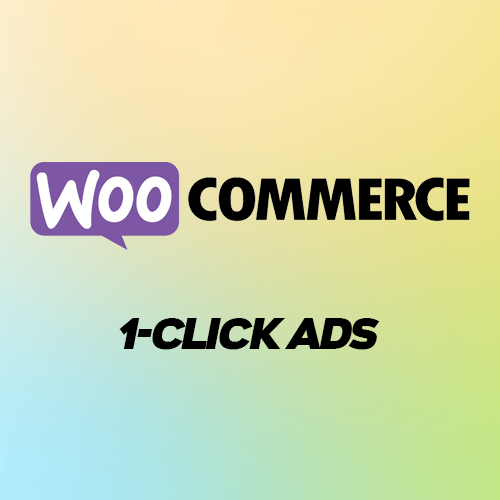
Set a Daily Budget
First, to take control of your online marketing, establish a “daily average” budget you can spend on advertising. New stores can gain traction across the web with as little as $5/day ($150/month). From there, a general rule of thumb is 5-10% of your revenue goes back into marketing overhead.
Calibrate Your Custom Audience
Second, you need to begin targeting your custom audiences! You can target customers based on demographic info (e.g. – age, gender, location), or interests they express online. Make sure to dive into research on your custom audiences – they will be your most likely customers!
Retarget Likely Customers
Ok, so you’ve set a daily budget, established large swaths of your custom audience, and now you’ve put out some nice ads. The metrics show that roughly 10,000 users viewed the ad from either their desktop or mobile. But barely any clicked through or bought!
Do not be discouraged, this is normal. Just remember, if even 1% of those 10,000 end up becoming customers, that’d be 100 new orders to your WooCommerce store. So, how do you up that conversion rate to become a truly successful online business?
Automate Ad Placements for Peak Conversions
There is software, easily accessible on the market, that can automate ad placements for the cheapest price and maximum exposure. Retargeting software could further increase your conversion rate to 2-3%, putting in the elite tier of e-commerce stores. In fact, the top 10% of all online stores have a conversion rate of 3.8% or higher.

Virtually all the most successful e-commerce stores deploy automated ad placements to get affordable ads with great visibility. They also all use savvy digital marketing techniques – like retargeting – to increase their WooCommerce sales. How? By reaching back out to customers who have seen their ads across the web and social media! After a few “touches,” customers are ready to go from “browsing” to “buying.”
Feel free to check out Ad360’s Quick Ads, to trial automated ad placements. It only takes one click to organize your next ad campaign!
WooCommerce: Why You Need Retargeting
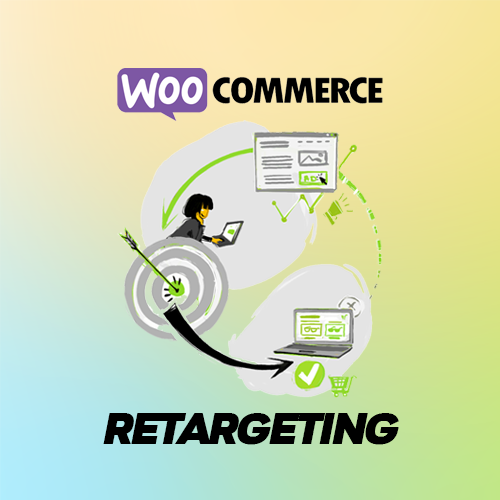
Online Ads Drive Traffic – But Not Conversions
If you set a healthy daily budget for your ads, and organize sensible “custom audiences” to funnel ads to, your store will likely see a spike in traffic. However, we’ve noticed a common concern of WooCommerce storeowners online.
Many have expressed that, after shelling out for ad placements, they saw no corresponding bump in click-through or conversion rates. This means that even though users are seeing the ads online, they are not clicking buy. A boost in traffic, but no increase in sales, is a frustrating experience for WooCommerce stores with great products.
What can WooCommerce storeowners in this position do to boost sales?
Ad Retargeting! Arguably the most valuable online tactic for increase e-commerce store sales.
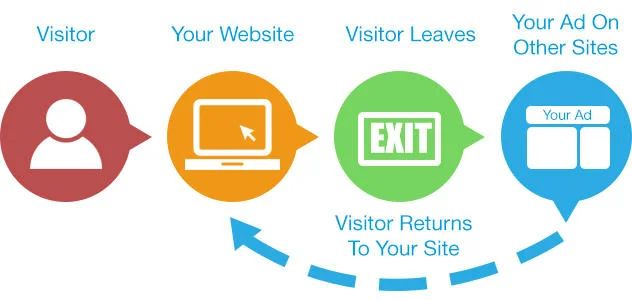
Why Ad Retargeting Outclasses Other Ads
If you’ve been keeping up with Ad360’s “growth academy” series, you know it takes multiple engagements – or “touches” – before most customers are ready to make a purchase. Ad retargeting becomes an essential digital marketing tactic here. You can capture the data of customers who visit, and target all future ads towards these individuals.
Why?
They’ve already demonstrated concrete interest browsing your store!
Eventually, after seeing 3 or 4 of your WooCommerce store’s ads, customers go from simply being “aware” you exist, to purchasing every seasonal special!
However, WooCommerce ad retargeting “plugins” can be costly, confusing, or slow down your site speed – defeating its purpose. If you want help establishing ad retargeting as an effective part of your digital marketing strategy, reach out to Ad360 today! We’ll give you the 360 degree breakdown: retargeting is our specialty 😊
So, if you are interested boosting your “click-through” and conversion rates, give us a call or email today. Happy selling!
5 Stages of Customer Awareness
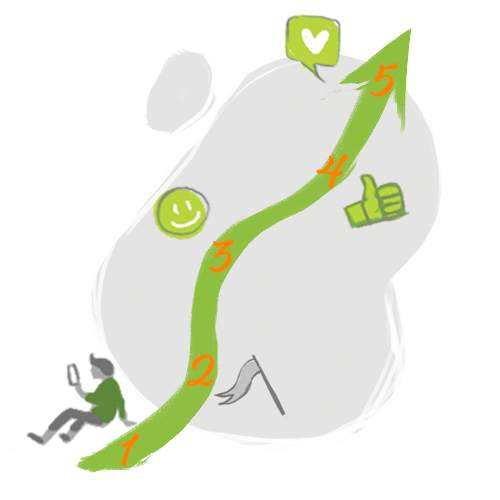
Introduction: Leading your Customer from “Total Ignorance” to “Problem Solved”
Picture that, at its best, advertising seamlessly enters the conversation of their customers. It’s not disjointed, it’s not ill-timed, and it provides a solution to a problem they’ve maybe considered… or might be totally unaware of.
Here enters the difficulty of effective marketing: each customer you reach out to may be at a different level of “customer awareness.” Does the customer already know you exist, and they are in the process of comparing you to competitors? Or are they so behind the 8-ball that they don’t even know they have a problem?
Inspired by marketing guru Eugene Schwartz, this blog post explores how properly framing the “five levels of customer awareness” brings precision and personalization to your customer outreach. It is essential to make sure you don’t come across as “spammy” or “pushy” while marketing your services online.
Different Segments of the Audience Require Different Messaging
We’ve made clear in previous posts that custom audiences are essential for honing your online ad campaigns. However, we haven’t yet discussed that the level of “product awareness” everyone has may vary wildly. You don’t want to send the same ad to a customer regular as you do to someone who has never even considered your solution to the problem. It will either come across as pushy, repetitive, or go directly over their heads. Below are the five stages of customer awareness listed out:
1. Unaware:
- The customer is completely unaware or unable to frame their problem. You can help by providing educational, entertaining, and engaging content to make them aware of the issue!
2. Problem Aware
- The customer now knows there’s a problem, but are stuck or too busy to consider solutions. Emphasize the priority of the issue and how they could minimize their stress by considering a solution!
3. Solution Aware
- Here is the transition point. You tell the customer that your store has the proper solution to the problem you framed earlier.
4. Product Aware
- Now, the customer is fully engaged with solving their issue… but they haven’t decided between you and other competitors. You need to expand on your product’s benefits, and why buying from your store will exceed their expectations.
5. Most Aware
- These are customer regulars who appreciate genuine outreach and “special offers,” like VIP coupons and the sort. Because they have a proven track record of buying from your store, feel free to sweeten the deal for them!
Real-Life Example of Ad Messaging Through the “5 Stages of Customer Awareness”
Let’s stay you’re a hair styling company selling unique, all natural hair products. The customer, using the same cheap hair products for years now, is totally unaware of the damage being done to their hair. So, you start your targeted ad campaign with the following intent:
A. Make customers aware of the problem with the chemicals in certain hair products – such as sulfates, parabens, or formaldehyde. The Ad banner could read, “Chemicals in common shampoos could be doing damaging your hair and health!”
B. Offer a solution. It could read, “How to pick the perfect hair products for your type of hair”
C. Now it’s time to push your e-commerce site! The ad banner reads, “Check out our website for the most healthy, nourishing products for each hair type!”
D. At this point, the customer’s cursor is hovering over “click to buy” – You may want to offer these folks a deal-sweetener to close the deal. This could include free shipping on their first purchase or maybe 10% off.
Conclusion: Organizing your Custom Audience Based on the 5 Levels of Awareness
For some business owners, organizing custom audiences based on their awareness is a bridge too far. It seems overly complicated, bogged down in details, and out of reach. Designing specific ad banners catering to each level of awareness is quite the undertaking – but it is the key to boosting sales to your e-commerce store. To have to marketing message resonate with buyers, you need to show a dynamic evolution in your customer outreach.
So, try a free demo from Ad360! We can help analyze your target audience based on their awareness, generating custom ads tailored to each stage of the process. We’ll provide support on how to organize and run the promotions step-by-step, funneling your audience from totally unaware to loyal customers 😊
Deal with Custom Audiences in Facebook
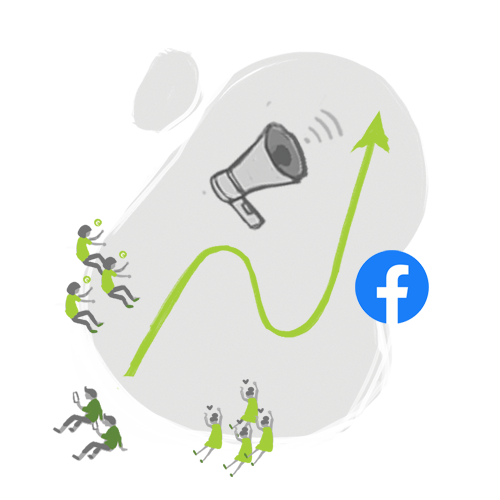
Custom Audiences = Complexity Explosion
In our previous article reviewing the basics of Facebook Ads, we touched on the importance of building custom audiences with Facebook’s features.
Age, gender, location, and Interests can all be modified for custom audiences… and… well… the sheer number of combinations that can be made from these factors alone is remarkably complex. Even the term for its growing sophistication takes your head for a spin… combinatorial explosions. Sheesh.
But no worries – this blog post takes a deeper dive into the complexity that comes with building multi-factor custom audiences on Facebook. While each essential for succeeding with a modest marketing budget on Facebook, so all Shopify business owners, take out a piece of paper and #2 pencil! This analysis goes “all in” on the complexity of creating custom audiences for Facebook
Why Are Custom Audiences So Important for Facebook Ads?
The first point to note: you need to build multiple custom audience combinations for marketing success on Facebook. It’s a response to the sea of 2 billion users out there, being exposed to ad banner after ad banner as they scroll down their news feed.
Think of it like this – if you had the time and resources to create a unique, tailor-made ad for each individual customer, sales would increase infinitely. So long as the data-gathering methods are clearly stated, consumers vastly prefer customized ads to overly generalized ones. Because you can create up to 500 custom audiences on Meta, we suggest taking full advantage of that by creating more custom audiences, not less.
Now, here’s where the concept of “combinatorial explosions” comes in – curating an individual ad for anything over a few customers is impossible. That would mean creating a “custom audience” of one, potentially thousands of times over. What if you are trying to reach a customer base of 50,000?
The Basics of Building Custom Facebook Audiences
After clicking “custom audience” on Facebook ad’s interface, there are four broad categories you can break the “audience factors” into:
Data source
Helps you target potential customers based on how they have engaged with your online store so far. Have they visited the site already? Specific web pages? Have they spent a substantial amount of time browsing? And are you pulling from web traffic, Facebook page engagement, Instagram, or some other data source? Remember, these customers may be in varying stages of the “AIDA” framework (awareness, Interest, Desire, Action). Therefore, breaking down your custom audience by analyzing their story through data points will inform how to further engage them to increase sales.
Demographics
Pretty straightforward – are you aiming for male, female, or nonbinary audiences? What age brackets? For example, if you are selling cheap vintage tees with a female cut, you are likely targeting women ages 16-35. Overall, demographics are a key component of creating effective custom audiences that drive sales.
Location
Aiming to reach the entire USA is far more costly than trying to reach a single state or region. So, make sure to tinker with different location settings based on your customer data. If you cast too broad a net, you’ll dilute the ability to keep engaging with that customer base; it will become too cost-prohibitive.
Interests
This is where things get interesting. Stacking and layering interests is key to creating target audiences. As you narrow down and tailor each custom audience, you can add interests that create a fuller picture of the users you are trying to reach. Most importantly, focus on the fact you can target individuals with “Interest A or Interest B,” as well as, “Interest A and also Interest B.” Both serve very different functions, as explained below!
“Stacking” or “Layering Interests” – Be Specific as Possible to Increase Ad Effectiveness
Specificity is crucial to have your ads compete with larger-budget businesses. For example, you could adjust the settings to advertise only to males 18-34 on the East Coast who have an expressed interest in sports or sports apparel
Even more, you can “stack” or “layer” interests to bring laser-precision to your custom audiences. Using the example above, interest stacking could set an audience that shows ads only to males 18-34 on the East Coast, who have an expressed interest in sports/sports apparel or have liked the official NBA, NFL, MLB, or NHL Facebook pages!
In contrast to “stacking,” interest layering more effectively narrows down your target audience. You could set an audience that shows ads only to males 18-34 on the East Coast, who have an expressed interest in sports/sports apparel and also have liked the official NBA, NFL, MLB, or NHL Facebook pages! Effectively “layering” interests for your custom audiences mean each ad creative will be tailor-made for different segments of your audience. The more layers, the more precise the audience. You can also exclude certain segments of these audiences to make the ad campaign’s target outreach even more efficient
Depending on the size of your business, the “sweet spot” may be anywhere from 50,000 to 1 million+ Just remember… the budget goes up the larger audience you have! On modest marketing budgets, it’s better to reach an audience of 1,000 with multiple ads to drive engagement, rather than reach an audience of 100,000 just once. The latter will be breezed over by users, driving no traffic nor sales to your store.
Conclusion: Deal Better with the Complexity of Custom Audiences thanks to Automated Software
Figuring out which custom audiences to create, based on which data sources, demographics, locations, and interests, becomes an exercise in compounding complexity. There are hypothetically hundreds to thousands of effective custom audience combinations for your store, and knowing which ones optimize your store for sales success is a full time job, if even possible.
Therefore, we recommend deploying automated software provided by Ad360 to bring laser-precision to your custom audience curation for Faceboook Ads. Not only do we specialize in analyzing user data for promotional campaigns, the time saved going through it yourself will be a massive burden lifted from your shoulders.
Concluding, Ad360 offers a free demo to help optimize your Faceboook ads and custom audience curation. We’ll handle the complexity of combinatorial explosions for you 😊 Cheers, and happy selling!